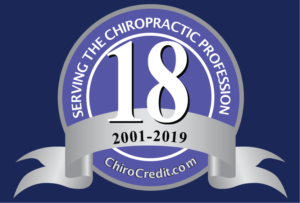Posts
 Over the last decade, research has demonstrated that spinal manipulation can change various aspects of nervous system function, including muscle reflexes, cognitive processing, reaction time, and the speed at which the brain processes information. One research group from New Zealand (Haavik Taylor et al) has hypothesized that the joint dysfunction part of the chiropractic clinical construct, the vertebral subluxation, results in altered afferent input to the central nervous system (CNS) that modifies the way in which the CNS processes and integrates all subsequent sensory input. This processing (i.e., sensorimotor integration) is a central nervous system (CNS) function that appears most vulnerable to altered inputs. Many studies show that chiropractic adjustments result in changes to sensorimotor integration within the central nervous system.
Over the last decade, research has demonstrated that spinal manipulation can change various aspects of nervous system function, including muscle reflexes, cognitive processing, reaction time, and the speed at which the brain processes information. One research group from New Zealand (Haavik Taylor et al) has hypothesized that the joint dysfunction part of the chiropractic clinical construct, the vertebral subluxation, results in altered afferent input to the central nervous system (CNS) that modifies the way in which the CNS processes and integrates all subsequent sensory input. This processing (i.e., sensorimotor integration) is a central nervous system (CNS) function that appears most vulnerable to altered inputs. Many studies show that chiropractic adjustments result in changes to sensorimotor integration within the central nervous system.
A new study sought to investigate possible neural plastic changes with spinal manipulation by measuring H-reflexes and V-waves. The H-reflex is an electrically evoked response that operates via the same neuronal circuitry as stretch reflexes. The H (Hoffmann) reflex may be useful to assess motoneuron excitability in vivo while also reflecting presynaptic inhibition of Ia afferent synapses. The so-called V-wave, which is an electrophysiological variant of the H-reflex, can be recorded during maximal voluntary motor contractions. The elicited V-wave response may be used to reflect the level of efferent neural drive from spinal α-motoneurons during maximal voluntary contraction (MVC).
Results of the study:
- the threshold to elicit the H-reflex significantly decreased by 8.5% in the spinal manipulation group
- the SEMGs showed a significant drop in the power spectrum after controls but there was no fatigue demonstrated in the power spectrum after spinal manipulation
- for study 1: maximal voluntary contraction as determined by SEMG increased significantly by 59.5% after spinal manipulation and decreased significantly by 13.3% after control
- for study 2: maximal voluntary contraction increased significantly by 16.1% after spinal manipulation and decreased significantly by 11.4% after control
- the V-wave amplitude (V/Mmax ratio) increased significantly by 45% after spinal manipulation and reduced significantly by 23% after control
Key Points
- This study is the first to indicate that chiropractic adjustments can induce significant changes in the net excitability for the low-threshold motor units/and or alters the synaptic efficacy of the Ia synapse
- the improvements in maximal voluntary contraction following spinal manipulation are likely attributed to the increased descending drive and/or modulation in afferents
- spinal manipulation prevents fatigue
- these results suggest that spinal manipulation may be indicated as part of the treatment for the patients who have lost tonus of their muscle and/or are recovering from muscle dysfunction such as stroke or orthopedic operations
- These findings will also be of interest to athletes and perhaps the general public
Episode
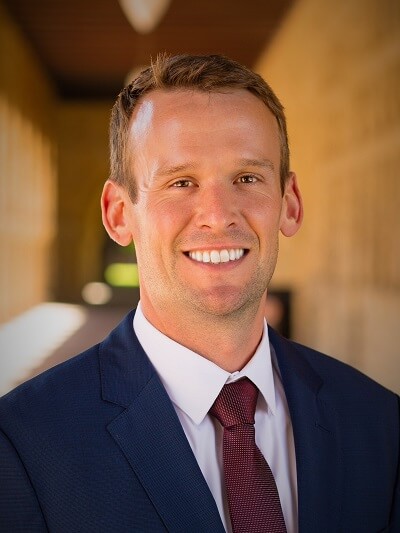
Dr. Ken Weber and I discuss his research pursuits which involve: 1) developing imaging modalities that are more sensitive and specific to the pathology, providing more diagnostic, prognostic, and predictive information; 2) providing more quantitative information to the clinician; and 3) using these measures to better understand the nervous system and how it functions, the neurophysiology of pain, how treatments work, and why certain treatments work for some patients but not for others. Dr. Ken Weber is an Instructor in the Department of Anesthesia, Perioperative and Pain Medicine at Stanford University. He obtained his Doctor of Chiropractic from Palmer College of Chiropractic Florida in 2009 and then completed a PhD in neuroscience at Northwestern University in 2016, specializing in movement and rehabilitation science. Ken’s research intersects clinical pain research and advanced MRI techniques with an emphasis on brain, spinal cord, and musculoskeletal imaging. His research aims to better understand the neural and musculoskeletal changes underlying clinical pain conditions, the mechanisms of treatments, and predictors for recovery. Ken is currently supported by a K23 Mentored Patient-Oriented Research Career Development Award from the National Institute of Neurological Disorders and Stroke of the National Institutes of Health. His previous funding has included the National Center for Complementary and Integrative Health, the National Institute on Drug Abuse, and the NCMIC Foundation, Inc.
I’d also like to point out that Ken was recently selected to be part of the CARL (Chiropractic Academy for Research Leadership) program.
View Dr. Weber‘s research at researchgate.net.
Here are some of the papers we discuss in this episode.
| 1. | Machine Learning for the Prediction of Cervical Spondylotic Myelopathy: A Post Hoc Pilot Study of 28 Participants. |
| Hopkins BS, Weber KA 2nd, Kesavabhotla K, Paliwal M, Cantrell DR, Smith ZA. | |
| World Neurosurg. 2019 Jul;127:e436-e442. doi: 10.1016/j.wneu.2019.03.165. Epub 2019 Mar 25. | |
| PMID: 30922901 [PubMed – indexed for MEDLINE] | |
| Similar articles |
| 2. | Are Magnetic Resonance Imaging Technologies Crucial to Our Understanding of Spinal Conditions? |
| Crawford RJ, Fortin M, Weber KA 2nd, Smith A, Elliott JM. | |
| J Orthop Sports Phys Ther. 2019 May;49(5):320-329. doi: 10.2519/jospt.2019.8793. Epub 2019 Mar 26. | |
| PMID: 30913967 [PubMed – in process] | |
| Similar articles |
| 3. | Lateral Corticospinal Tract Damage Correlates With Motor Output in Incomplete Spinal Cord Injury. |
| Smith AC, Weber KA 2nd, O’Dell DR, Parrish TB, Wasielewski M, Elliott JM. | |
| Arch Phys Med Rehabil. 2018 Apr;99(4):660-666. doi: 10.1016/j.apmr.2017.10.002. Epub 2017 Oct 26. | |
| PMID: 29107041 [PubMed – indexed for MEDLINE] Free PMC Article | |
| Similar articles |
| 4. | Evidence for decreased Neurologic Pain Signature activation following thoracic spinal manipulation in healthy volunteers and participants with neck pain. |
| Weber Ii KA, Wager TD, Mackey S, Elliott JM, Liu WC, Sparks CL. | |
| Neuroimage Clin. 2019;24:102042. doi: 10.1016/j.nicl.2019.102042. Epub 2019 Oct 18. | |
| PMID: 31670070 [PubMed – in process] Free PMC Article | |
| Similar articles |
| 5. | Deep Learning Convolutional Neural Networks for the Automatic Quantification of Muscle Fat Infiltration Following Whiplash Injury. |
| Weber KA, Smith AC, Wasielewski M, Eghtesad K, Upadhyayula PA, Wintermark M, Hastie TJ, Parrish TB, Mackey S, Elliott JM. | |
| Sci Rep. 2019 May 28;9(1):7973. doi: 10.1038/s41598-019-44416-8. | |
| PMID: 31138878 [PubMed – in process] Free PMC Article | |
| Similar articles |
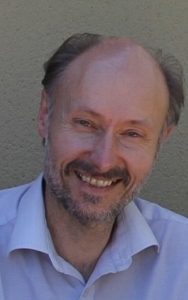
Dr. Peter McCarthy and I discuss his varied research in the profession from spine function to dysfunction and multidisciplinary teamwork. Professor Peter McCarthy PhD (Full Professor of clinical technology, University of South Wales, UK) has been involved in the education of chiropractors for 30 years. He obtained his PhD in neurophysiology from the University of St Andrews (1986) and worked in various institutes around the world. He first joined the AECC in 1989, moving in 1998 to the University of Glamorgan to help Susan King create and consolidate the first University based chiropractic course in the UK: later becoming the Welsh Institute of Chiropractic. Holding a couple of patents, Peter has been awarded honorary fellowships, from the BCA, RCC and EAC, and research awards from the National Back Pain Association and British Association for Sport and Exercise Medicine, amongst others; even being part of a team that won a National design award. He has successfully supervised PhD students from a wide range of professions across medicine, including 4 chiropractors. Although his research publication profile appears eclectic, it is tied together by his overarching interest in sensory neurophysiology. He has studied the innervation of spinal structures, factors that affect cervical spine function and also performed RCTs of therapies on chronic back pain. More recently, he has been looking at measuring the sensory factors that can help predict relative discomfort when sitting or lying as well as developing a multidisciplinary team interested in studying neck function changes in sport and developing ways of reducing the impact these changes can have.
A link to Dr. McCarthy’s researchgate profile is found here.
How to cite this episode:
Smith DL. Chiropractic Science: From Spine Function to Dysfunction and Multidisciplinary Teamwork With Dr. Peter McCarthy [internet]. Eaton, Ohio; Aug 1, 2018. Podcast: 59:14. Available from: https://chiropracticscience.com/podcast/drpetermccarthy/
Below is a list of some of the articles we discuss in this interview.
| 1. | A pilot study assessing patient-centred care in patients with chronic health conditions attending chiropractic practice. |
| Stuber KJ, Langweiler M, Mior S, McCarthy PW. | |
| Complement Ther Med. 2018 Aug;39:1-7. doi: 10.1016/j.ctim.2018.05.006. Epub 2018 May 18. | |
| PMID: 30012379 [PubMed – in process] | |
| Similar articles |
| 2. | Modelling the effect of electrode displacement on transcranial direct current stimulation (tDCS). |
| Ramaraju S, Roula MA, McCarthy PW. | |
| J Neural Eng. 2018 Feb;15(1):016019. doi: 10.1088/1741-2552/aa8d8a. | |
| PMID: 28925375 [PubMed – in process] | |
| Similar articles |
| 3. | Effect of Anodal-tDCS on Event-Related Potentials: A Controlled Study. |
| Izzidien A, Ramaraju S, Roula MA, McCarthy PW. | |
| Biomed Res Int. 2016;2016:1584947. Epub 2016 Nov 10. | |
| PMID: 27957487 [PubMed – indexed for MEDLINE] Free PMC Article | |
| Similar articles |
| 4. | The factors and motivations behind United Kingdom chiropractic professional association membership: a survey of the Welsh Institute of Chiropractic Alumni. |
| Wotherspoon SE, McCarthy PW. | |
| Chiropr Man Therap. 2016 Sep 12;24(1):35. doi: 10.1186/s12998-016-0115-x. eCollection 2016. | |
| PMID: 27621800 [PubMed] Free PMC Article | |
| Similar articles |
| 5. | Assessing patient-centered care in patients with chronic health conditions attending chiropractic practice: protocol for a mixed-methods study. |
| Stuber KJ, Langweiler M, Mior S, McCarthy PW. | |
| Chiropr Man Therap. 2016 May 9;24:15. doi: 10.1186/s12998-016-0095-x. eCollection 2016. | |
| PMID: 27162609 [PubMed] Free PMC Article | |
| Similar articles |
| 6. | Wearing American Football helmets increases cervicocephalic kinaesthetic awareness in “elite” American Football players but not controls. |
| McCarthy PW, Hume PJ, Heusch AI, Lark SD. | |
| Chiropr Man Therap. 2015 Nov 16;23:32. doi: 10.1186/s12998-015-0077-4. eCollection 2015. | |
| PMID: 26576266 [PubMed] Free PMC Article | |
| Similar articles |
| 7. | Survey based investigation into general practitioner referral patterns for spinal manipulative therapy. |
| Kier A, George M, McCarthy PW. | |
| Chiropr Man Therap. 2013 May 29;21:16. doi: 10.1186/2045-709X-21-16. eCollection 2013. | |
| PMID: 23718217 [PubMed] Free PMC Article | |
| Similar articles |
Learn what happens in your brain when a chiropractor adjusts your spine. Dr Heidi Haavik is a chiropractor and a neurophysiologist who has worked in the area of human neurophysiology for over 15 years. Heidi has a PhD in human neurophysiology from the University of Auckland. Her work has been instrumental in building the base of scientific evidence demonstrating the efficacy of chiropractic care in improving people’s health and wellbeing. As a researcher, she has investigated the effects of chiropractic adjustments of dysfunctional spinal segments (vertebral subluxations) on somatosensory processing, sensorimotor integration and motor cortical output.
Dr Haavik is the Director of Research at the New Zealand College of Chiropractic where she has established the Centre for Chiropractic Research. Dr Haavik is also an Adjunct Professor at the University of Ontario, Institute of Technology in Oshawa, Canada and is a member of the World Federation of Chiropractic’s Research Council. Dr Haavik has received numerous research awards and has published a number of papers in chiropractic and neurophysiology journals. She has presented her work to both chiropractic and neuroscience communities around Australasia, North America and Europe. She is on the Editorial Board of the Journal of Manipulative and Physiological Therapeutics and Journal of Chiropractic Education. She was named Chiropractor of the year in 2007 by both the New Zealand Chiropractic Association and the New Zealand College of Chiropractic Alumni Association. She is also the author of a textbook – The Reality Check which describes in easy to understand language what happens in the brain when a chiropractor adjusts dysfunctional segments in your spine.
Read about Dr Haavik at her website, and get her book and posters at heidihaavik.com. Subscribe to Dr Haavik’s research service at haavikresearch.com to get great evidence-informed marketing material for chiropractic practices including among other things, videos for your website that explain how chiropractic works. Interested in donating toward her research efforts? Contact her at haavikresearch.com.
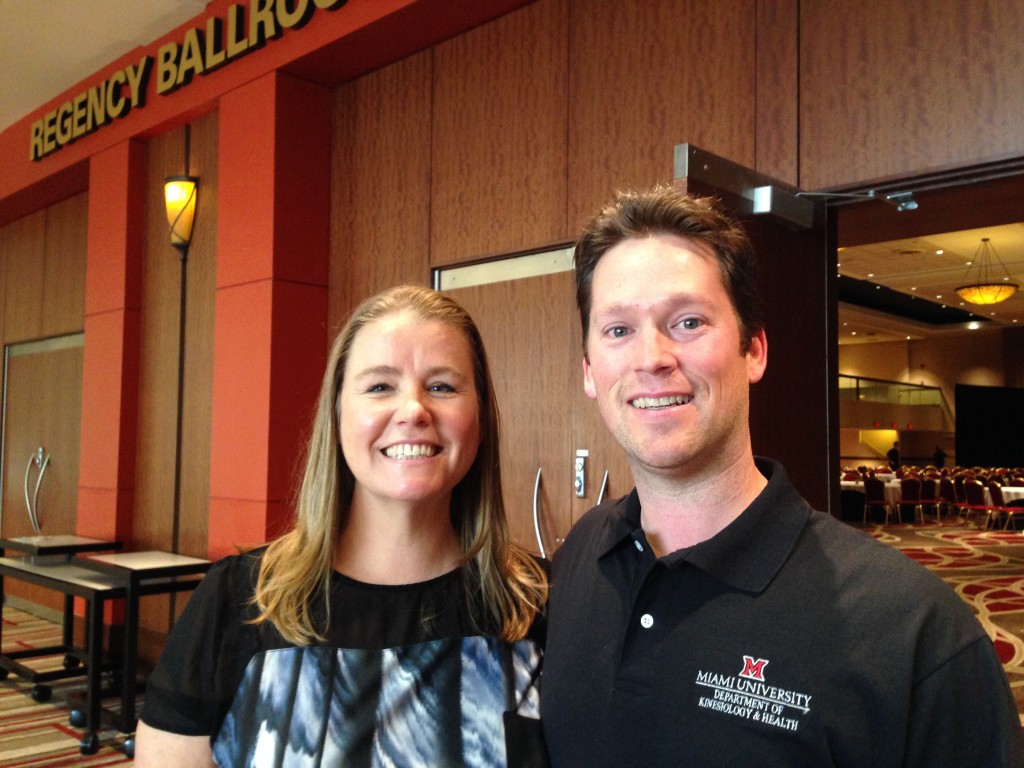
Dr. Haavik and Dr. Smith at the Ohio State Chiropractic Association Convention, 2015
Dr. Haavik’s book: The Reality Check
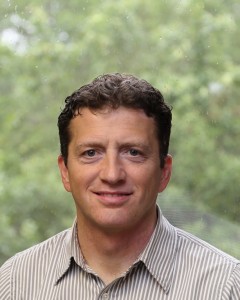 Listen to this great interview with Dr. John Srbely as we talk about his research interests in chiropractic, myofascial pain, myofascial trigger points and central sensitization. Dr. Srbely is a researcher and Assistant Professor at the University of Guelph in the Department of Human Health and Nutritional Sciences. He studies the physiologic mechanisms of myofascial trigger points and their role in the clinical expression and treatment of pain and joint/muscle dysfunction in chronic disease. A core theme to his research is the study of central sensitization which is a fundamental neuradaptive process associated with the pathophysiology of pain and disease.
Listen to this great interview with Dr. John Srbely as we talk about his research interests in chiropractic, myofascial pain, myofascial trigger points and central sensitization. Dr. Srbely is a researcher and Assistant Professor at the University of Guelph in the Department of Human Health and Nutritional Sciences. He studies the physiologic mechanisms of myofascial trigger points and their role in the clinical expression and treatment of pain and joint/muscle dysfunction in chronic disease. A core theme to his research is the study of central sensitization which is a fundamental neuradaptive process associated with the pathophysiology of pain and disease.
Dr. Srbely’s research expertise and interests lie in the fields of clinical biomechanics and neurophysiology. He has a specific interest in the study of pain and joint function associated with aging and chronic disease such as osteoarthritis, myofascial pain and fibromyalgia. To this extent, he studies the physiologic mechanisms of myofascial trigger points and their role in the clinical expression and treatment of pain and joint/muscle dysfunction in chronic disease. A core theme to his research is the study of central sensitization. Central sensitization is a fundamental neuradaptive process associated with the pathophysiology of pain and disease, however, the impact of central sensitization on the physiologic expression of chronic myofascial pain and human mechanics/pathomechanics in chronic degenerative diseases such as osteoarthritis is poorly understood. Dr. Srbely’s research initiatives aim to develop novel/enhance existing treatment approaches in clinical pain management (diagnosis and treatment) and musculoskeletal biomechanics/pathomechanics associated with chronic diseases and aging.
View Dr. Srbely’s research at researchgate.net.
Here are some of the articles we discuss in this episode:
|
1.
|
Knowledge Transfer within the Canadian Chiropractic Community. Part 1: Understanding Evidence-Practice Gaps.
Kawchuk G, Bruno P, Busse JW, Bussières A, Erwin M, Passmore S, Srbely J.
J Can Chiropr Assoc. 2013 Jun;57(2):111-5.
PMID: 23754855 Free PMC article. No abstract available. |
|
2.
|
Immediate effects of spinal manipulative therapy on regional antinociceptive effects in myofascial tissues in healthy young adults.
Srbely JZ, Vernon H, Lee D, Polgar M.
J Manipulative Physiol Ther. 2013 Jul-Aug;36(6):333-41. doi: 10.1016/j.jmpt.2013.01.005. Epub 2013 Jul 3.
PMID: 23830709 Clinical Trial. |
|
3.
|
Spinal manipulative therapy and its role in the prevention, treatment and management of chronic pain.
Srbely J.
J Can Chiropr Assoc. 2012 Mar;56(1):5-7.
PMID: 22457535 Free PMC article. No abstract available. |
|
4.
|
Chiropractic science: a contemporary neurophysiologic paradigm.
Srbely J.
J Can Chiropr Assoc. 2010 Sep;54(3):144-6.
PMID: 20808613 Free PMC article. No abstract available. |
|
5.
|
Capsaicin-induced central sensitization evokes segmental increases in trigger point sensitivity in humans.
Srbely JZ, Dickey JP, Bent LR, Lee D, Lowerison M.
J Pain. 2010 Jul;11(7):636-43. doi: 10.1016/j.jpain.2009.10.005. Epub 2009 Dec 16.
PMID: 20015704 Clinical Trial. |
|
6.
|
Knowledge Transfer within the Canadian Chiropractic Community. Part 2: Narrowing the Evidence-Practice Gap.
Kawchuk G, Newton G, Srbely J, Passmore S, Bussières A, Busse JW, Bruno P.
J Can Chiropr Assoc. 2014 Sep;58(3):206-14.
PMID: 25202148 Free PMC article. No abstract available. |
Partner
Donate
Recent Episodes
- 066- Dr. Ronald Farabaugh – The Cost of Chiropractic vs Medical Management of Adults With Spine-Related Musculoskeletal Pain March 19, 2024
- 065- Dr. Clinton Daniels Discusses Manipulation and Prior Spine Surgery, Medications for Back Pain and More June 15, 2023
- 064- Dr. Matt Fernandez Discusses Physical Activity, Exercise and Chiropractic May 11, 2023
- 063- Dr. Robert Trager Discusses Spinal Manipulation, Lumbar Discectomy and Case Reports January 9, 2023
- 062- Dr. Lindsay Gorrell Discusses Spinal Manipulation, the Vertebral Artery, Reporting of Adverse Events January 3, 2023
- 061- Questioning the Relationship Between Chiropractic and ED Visits December 13, 2022
- 060- Dr. Brian Anderson Discusses Chiropractic, Treatment Escalation, Medical Services November 17, 2022
- 059- Dr. Frank Scali – Upper Cervical Spine and Myodural Bridge July 5, 2022
Security – SSL Certificate
Partner
 Chiropractic Science is a Miami University Digital Health Literacy Partner. Health literacy is the ability to read, write, and talk about health habits in a variety of life situations and environments. Our interprofessional partnership promotes the use and dissemination of electronic materials for evidence-based EHealth.
Chiropractic Science is a Miami University Digital Health Literacy Partner. Health literacy is the ability to read, write, and talk about health habits in a variety of life situations and environments. Our interprofessional partnership promotes the use and dissemination of electronic materials for evidence-based EHealth.




